|
Desire it and have it!!!
Join Date: Apr 2002
Location: www.fuckwithfire.com ICQ 512915
Posts: 30,767
|
I hunted around for a low mileage last model built and I got close! I bought a 2007 CBR 1100XX Super Blackbird with less than 2500 km on the clock!  :
Pics of the same model bike I have - not my bike:
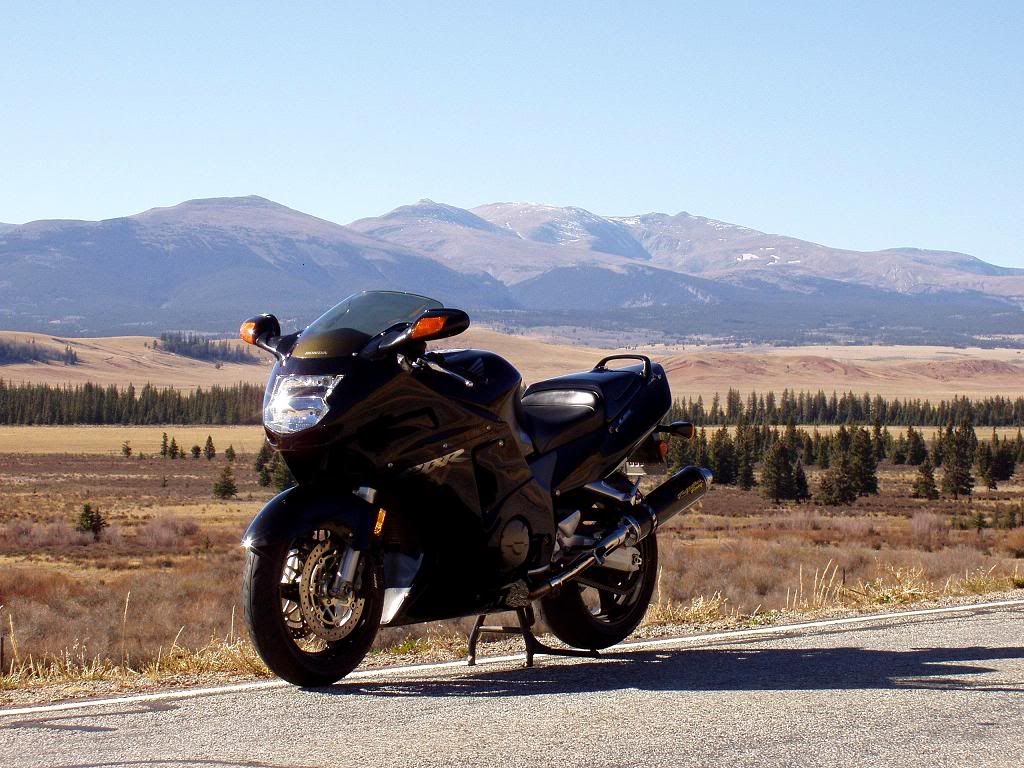

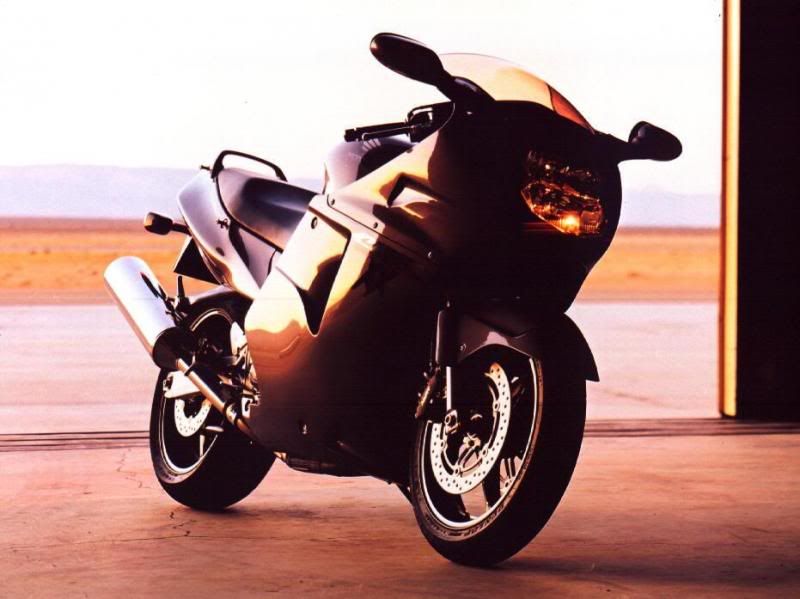
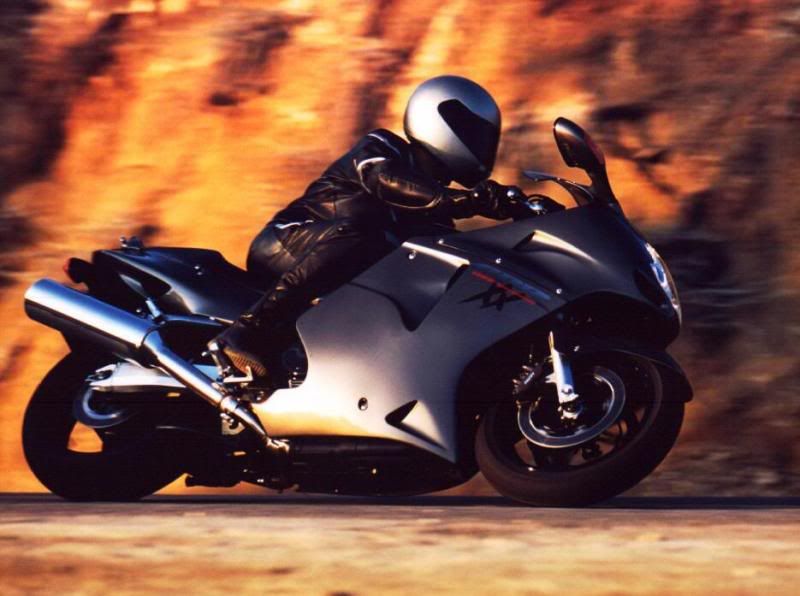
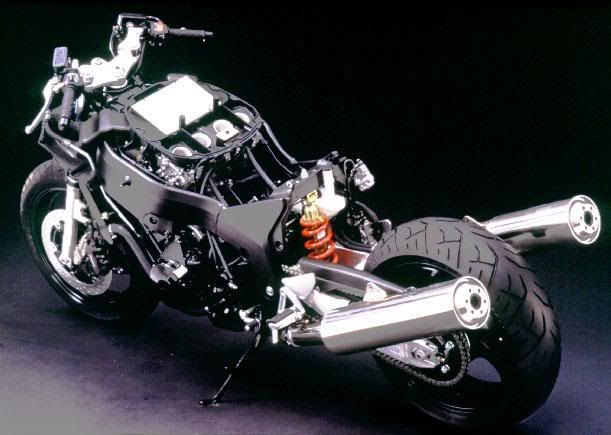 Pics of my bike taken with an iPhone
Pics of my bike taken with an iPhone:
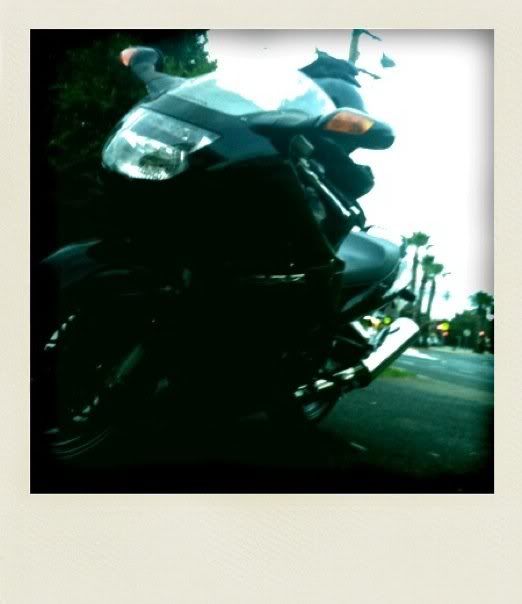
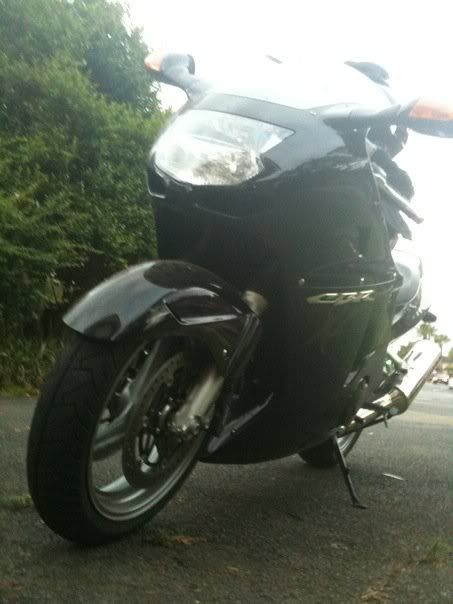
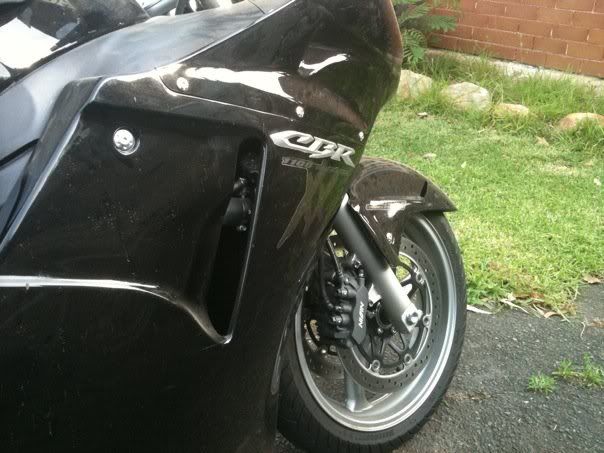
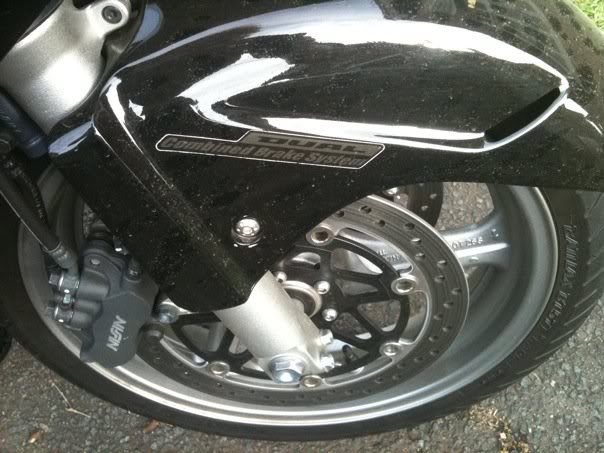

Quote:
It cannot be much better than this at the time being. Read the full story about the Honda CBR1100XX Super Blackbird at Bikenet. You can even go here
Key features of the bike include:
* Sleek aerodynamics to increase performance and help to push the bike past the 190mph barrier whilst still maintaining rider protection. Honda admit that the primary reason for the bike's styling was performance rather than looks.
* Dual piggy-back (rather than side-by-side) headlamps to keep the bike's nose narrow yet still give more coverage overall.
* "Isolated air intakes" - fairing panels designed to make sure the engine receives cool air, but surprisingly no ram-air induction.
* Engine clock and upper crankcase based on the Fireblade engine, but with a slightly reduced included valve angle of 30 degrees as against 32 for the CBR900RR.
* Dual gear-driven balancer shafts to reduce high-frequency vibration without the need for rubber mounting. Honda claim that this allows them to use a lighter frame yet maintain rigidity by using the engine as an integral part of the chassis.
* 3D mapped ignition inherited from the Fireblade, along with slim-tipped NGK VX spark plugs originally designed for the RC45.
* 43mm conventional cartridge-type forks mounted in forged aluminium triple- clamps with "decorative machining".
* Dual Combined Braking System, first seen on the ST1100 Pan-European, which operates both front and rear brakes when either lever is used. The pumping ratios of the system have been revised to suit the more sporting nature of the bike.
* Indicators built in to the backs of the mirrors (borrowed from the NR750) and an LCD clock on the dash
* Bridgestone BT57, Dunlop D205 or Michelin Macadam 90 tyres as standard.
* 22 litre tank, 4-2-1-2 exhaust, U-lock holder under the seat, nylon grabrail (to stop your passengers hands from getting cold).
On Thursday July 4th, Honda assembled the European motorcycling press in Frankfurt, Germany, and announced the arrival of the highly anticipated CBR1100XX Super Blackbird. Applying lessons learned during the development of their other two best-selling sporting machines, the CBR900RR and CBR600F3, Honda set out to develop an open-class motorcycle whose emphasis is not just on delivering the highest power output or fastest top speed at the expense of other factors, but to combine several high-performance features with a level of riding comfort never before realized in the big-bore sport class. Honda wants the Blackbird -- their first new liter-plus sportbike in several years -- to be identified as The World's Greatest Super Sport.
Bikes like these have a history of being reserved for the European market, much to the chagrin of American sportbike riders. The good news is that Honda will be bringing the new CBR to the U.S. for 1997 - sans the Super Blackbird moniker - and is scheduled to formally announce the bike at the Honda Dealer Convention in Nashville, Tennessee in October.
Styled like no other Honda sportbike before it, the new CBR1100XX incorporates what Honda refers to as the ultimate in wind tunnel-tested construction to achieve a small frontal area and one of the lowest effective coefficients of drag in motorcycling, while maintaining a high level of wind protection and rider comfort. Striking in its appearance, the fairing features a narrow frontal aspect, equal to that of a 50cc motorcycle, allowing smooth air flow with minimal resistance. Honda claims the fairing draws in just enough air around the front wheel and fender to provide effective cooling to the radiator, while still realizing a frontal area effectively smaller than most 250cc racer replicas. Excellent aerodynamics, rather than looks, were a top priority in the new fairing's design. The unusual over-under, dual "piggy-back" headlights and the bullet-shaped upper nose fairing, incorporating mirror-integrated turn signals, are certain to produce some strong opinions about its styling.
The CBR1100XX's all-new, lightweight 1,137cc engine features the same crankcase and cylinder block arrangement used in both the CBR600 and CBR900. The cylinders are canted forward 22 degrees more than those on the CBR1000F, with the cams driven by a side-mounted chain. Valve actuation is via direct cam-over-bucket configuration with a 30 degree included valve angle, 2 degrees less than the CBR900RR layout, resulting in a more compact combustion chamber shape.
The design team concentrated on keeping the new engine small and light, and despite being nearly 140cc more than the CBR1000's mill, and featuring an all-new dual-shaft balancer system to boot, the new engine weighs fully 22 pounds less than the 998cc powerplant. Following Honda's optimal mass centralization approach used on the redesigned CBR900RR, the 1100XX's small engine package permits it to be positioned in the ideal location in the frame for ultra-light handling.
Previously, no motorcycle engine powering a high-performance sportbike has ever used a dual-shaft balancer in its design. Not unusual in the automotive world, it has been used in a couple of touring bikes in the past. Honda claims the new dual-shaft balancer design featured in the XX almost completely eliminates high-frequency vibration. The first balancer shaft is located in front of the crankshaft, spinning in the opposite direction of the crank, while the second balancer shaft is located above and behind the crankshaft, spinning in the same direction as the crank, the combination of the two shafts supposedly eliminating the effects of secondary vibration.
Other features found on the new 1100's engine include an ignition system that is of the same 3-D map-type digital design used on the '96 CBR900RR. The four 42mm slanted flat-slide CV carbs are also similar to those used on the 900RR, and feature a throttle position sensor linked to the ignition system. Because of the room required to fit the twin balancer shafts in the crankcase, a new compact ACG was positioned on the left end of the crankshaft. On the other side, the hydraulic clutch utilizes nine 150mm plates covered by a floating clutch cover using a thick rubber gasket and rubber inserts around its mounting bolts to minimize mechanical noise from the clutch area. And a large-capacity oil cooler is mounted directly beneath the steering head, receiving a steady stream of cooling air from the twin air intake ports in the nose of the fairing.
Honda engineers fitted the CBR-XX with a dual-spar diamond-configuration aluminum frame similar in design to the new frame found on this year's CBR900RR. The new frame features large triple-box-section extruded main spars welded to rigid cast-aluminum swingarm pivot plates and a cast-aluminum steering head. The frame's bolt-on seat rail is made from box-section mild steel tubing. A new triple-box-section extruded aluminum swingarm is fitted, and is supported by one of Honda's latest internal-piston shocks which offers stepless-adjustable rebound damping and 4.7 inches of travel. No compression damping adjustment is offered. Up front, a pair of conventional slider 43mm cartridge forks feature Honda's Multi-Action System (H.M.A.S.) internal piston design, and have 4.3 inches of travel. In a surprising move, there are no suspension adjustments offered on the CBR-XX's forks.
Honda equipped the big Super Sport with an evolutionary version of the Linked Braking System (LBS) found on the '96 ST1100 ABSII. The CBR-XX's system is tuned more for the braking requirements of a high-performance sportbike, rather than the more comfort-oriented requirements of the sport touring ST. The system features a new delay valve, located between the foot pedal's master cylinder and the center pistons of the front brake calipers, that is supposed to smooth front brake engagement and minimize brake dive associated with sudden application of the front brakes. All-new, thinner 310mm floating front discs feature new stainless steel mounting carriers that use a simpler spoke design than the aluminum units used on most of Honda's current big-bore sportbikes. The number of floating disc inserts was also reduced from twelve to six. The rear disc is a standard one-piece 256mm unit.
|
|